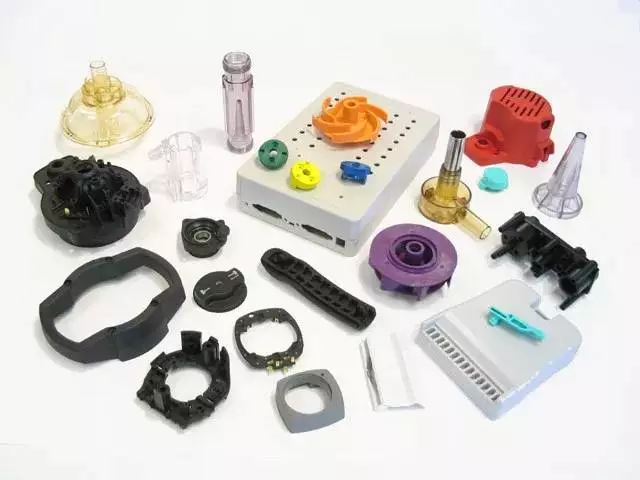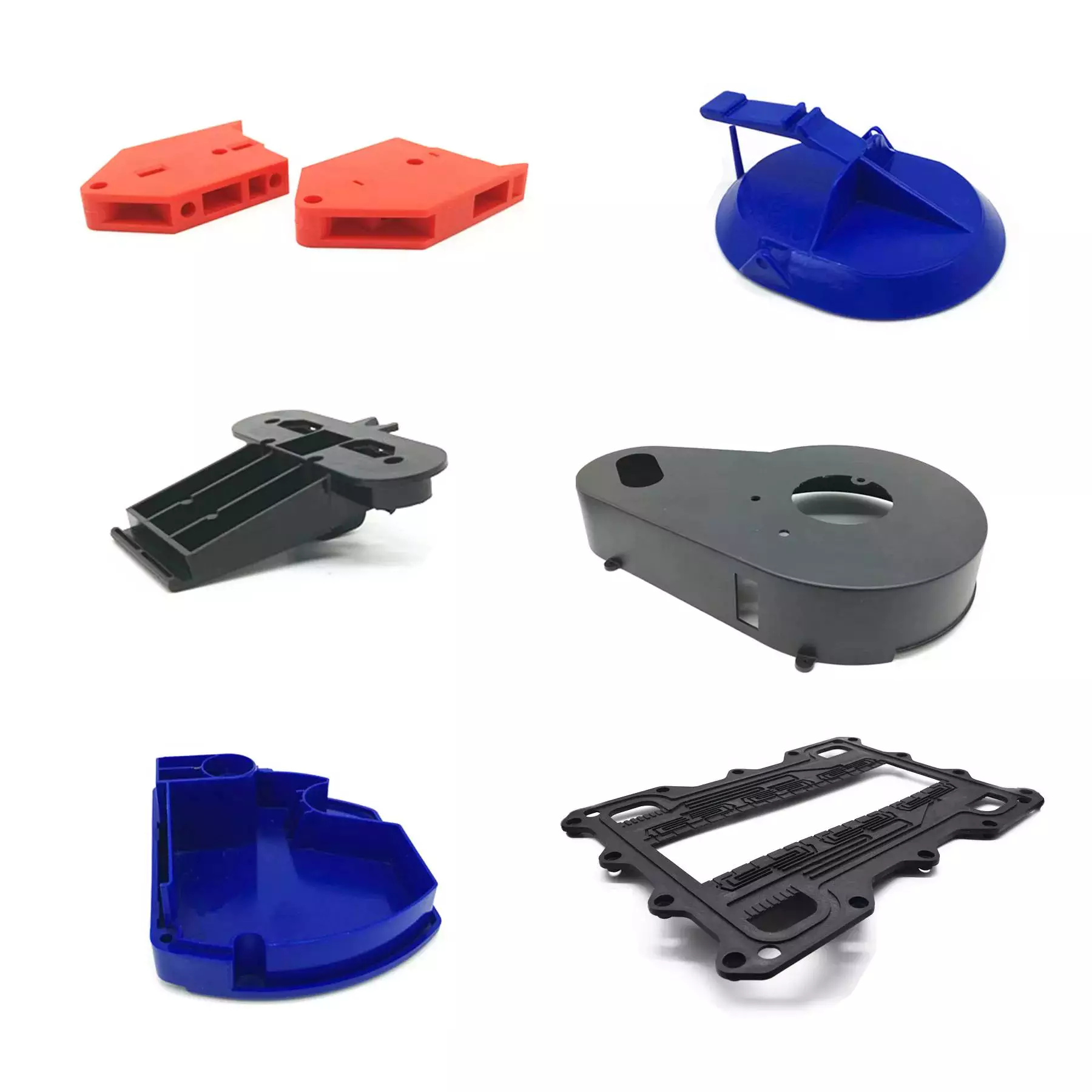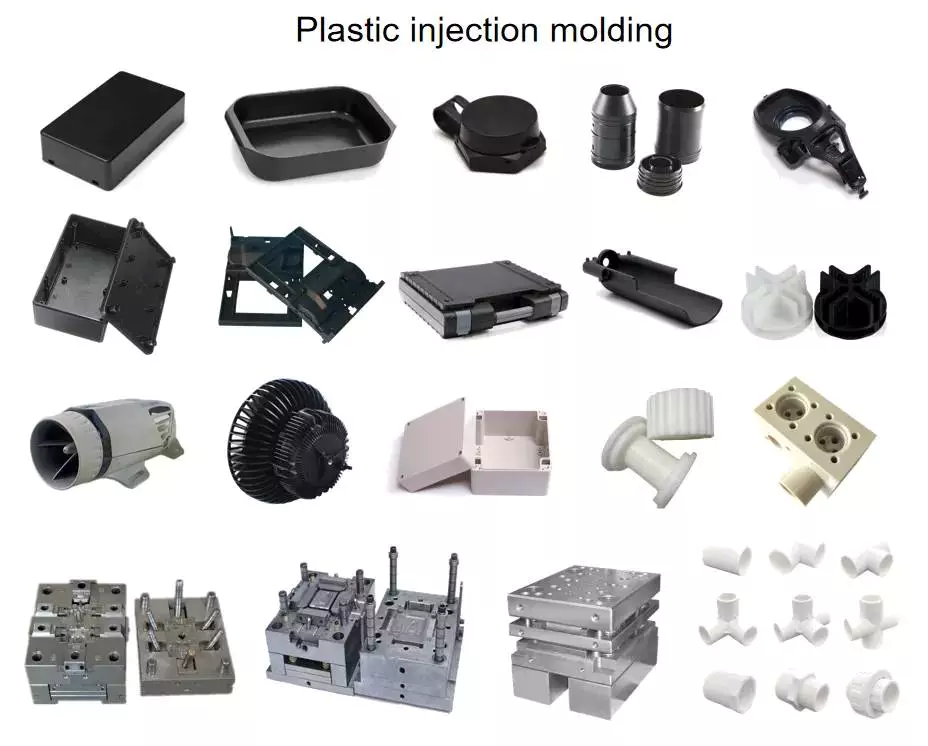Solution Description
Inexpensive Abs plastic injection molded recreation controller components for African market place
Thorough Photos
General details & coverage for our OEM/ODM plastic injection mould:
| Detailed information for mould metal | ||
| Mould materials | Hardness | Mould lifestyle |
| P20 | HRC 28-33 | >300,000 photographs |
| 718 | HRC 33-36 | >500,000 photographs |
| H13 | HRC >43 | >800,000 pictures |
| 2344 | HRC >48 | >800,000 shots |
| S136 | HRC 48-fifty two | >1,000,000 photographs |
Guide Time :
| Quantity(Sets): | one – 1 | >1 |
| Est. Time(day): | 30~forty five | To be negotiated |
| Description of Ambition Plastic Injection Moulds: | |
| Mould material: | forty five#, P20, 718, 2738, NAK80, S136, H13, 1.2344 etc. |
| Mould foundation: | LKM, HASCO, and many others. |
| Normal Part: | DME, HASCO, JIS, and so forth. |
| Cavity: | Solitary/Multi |
| Runner: | Scorching/Cold |
| Mould daily life: | 10,0000~5,000,000shots |
| Style computer software: | UG, PROE, CAD, SolidWorks, and so forth. |
| Plastic content: | PP, Laptop, PE, PS, PU, Ab muscles, PVC, PA, POM, PMMA, PET, PPR, etc. |
| Delivery time: | 40–60days |
| Bundle: | Wood Circumstance |
| Supply: | By Sea |
| Requirements: | Depends on the customer’s requirements |
| Process Device: | CNC, Substantial-Pace Carver, EDM, Wire Reduce, Driller, Grinder, fly cutter, etc. |
Ambition Mould Trade Procedure:
| one. Quotation | According to the sample, drawing, and certain needs. |
| 2. Discussion | Mould materials, cavity variety, cost, runner, payment, and many others. |
| 3. S/C Signature | Acceptance for all the products |
| four. Progress | Spend fifty% by T/T |
| 5. Solution Design Examining | We verify the item design. If some situation is not excellent, or can not be carried out on the mould, we will ship the customer the report. |
| 6. Mould Layout | We make mould layout on the basis of verified product patterns and deliver them to the buyer for affirmation. |
| 7. Mold Tooling | We start off to make mold following the mold layout verified |
| 8. Mildew Processing | Send report to customer as soon as each and every 7 days |
| nine. Mold Screening | Ship trial samples and consider-out studies to the customer for confirmation |
| 10. Mildew Modification | In accordance to the customer’s comments |
| eleven. Harmony Settlement | fifty% by T/T soon after the consumer approves the demo sample and mould good quality. |
| twelve. Delivery | Delivery by sea or air. The forwarder can be selected by your facet. |
Organization data:
Established in 2571, We are devoted to supplying our consumers with the maximum level of plastic mould production & injection molding solutions.
We usually insist on the principle of client gratification and characteristics. We have set some illustrations of buyers in distinct countries for new customer referrals. We actually hope that we can construct a extended-time period enterprise romantic relationship with CZPT cooperation with you.
We can make all varieties of plastic injection mould including automotive part moulds, beauty component moulds, health care component molds, residence appliance moulds, electronic part moulds and so on.
We have abundant experience in creating customized plastic injection mould. Send me the inquiry with the drawing and prerequisite (metal raw substance, cavity no. and so on) for mould, and I will reply to you inside of 24 several hours and quote for you within 2 working days.
Why Decide on Us:
| Ideal design, competitive price tag |
| Above ten years’ Wealthy encounter in this field |
| Specialist in layout & making plastic mould |
| One particular stop solution |
| On-time supply |
| Very best right after-sale provider |
| Specialized in all sorts of plastic injection moulds |
Packaging & Delivery:
FAQ:
1. Q: I have an idea for a new product, but I don’t know if it can be manufactured. Can you help?
A: Yes! We are always happy to work with potential customers to evaluate the technical feasibility of your idea or design and we can advise on materials, tooling, and likely set-up costs.
2. Q: What are the advantages of getting my parts manufactured locally?
A: We can offer quick reaction times to any changes in specification, batch size, or substance. We can ship small or large quantities anywhere in North America, and Europe overnight to accommodate unforeseen changes in demand.
3. Q: My components have already been developed in CAD. Can you use the drawings?
A: Yes! DWG, DXF, IGES, Solid works and STP, X_T files can all be used to generate quotes, models, and mold tools – this can save time and money in producing
your parts.
four. Q: Can I test my idea/component before committing to mold tool manufacture?
A: Indeed, we can use CAD drawings to make Prototype models for design and functional evaluations or market assessments.
five. Q: What type of plastic is best for my design/component?
A: Materials selection depends on the application of your design and the environment in which it will function. We will be happy to discuss the alternatives and suggest the best material.
six. Q: What type of mould tool do I need?
A: Mould tools can be either a single cavity (one part at a time) or multi-cavity (2,4, 8, or 16 parts at a time). Single-cavity tools are generally used for small quantities, up to 10,000 parts per year whereas multi-cavity tools are for larger quantities. We can look at your projected annual requirements and recommend the
very best tooling option for you.
seven. Q: Okay, I’ve decided to go ahead with my project. How long will it take to get my parts?
A: It can take 3 to 6 weeks to have the mould tool manufactured depending on the part’s complexity, dimensions, and the number of impressions/ cavities (single or multiple). After we receive your final approval on the tool’s preliminary style, you can expect delivery of T1 parts within 3-6 months. And throughout the mildew building procedure, mould builds Weekly Update will be provided to you each week for your better knowing of the producing development in our workshop.
| Warranty: | 3 Years |
|---|---|
| Shaping Mode: | Injection Mould |
| Surface Finish Process: | Polishing |
| Mould Cavity: | Multi Cavity |
| Plastic Material: | ABS |
| Process Combination Type: | Single-Process Mode |
| Customization: |
Available
| Customized Request |
|---|
Factors to Consider When Converting a Design to Injection Molding
When considering injection molding for your design, there are several things you should consider. These factors include design, material selection, process, and reliability. In addition, you should consider the price of each part. The average cost per injection molded part is between $1 and $5. If you want to reduce your costs and improve your production cycle, look into converting your design to injection molding.
Design considerations for injection molded parts
 Injection molded parts must meet certain design considerations to ensure quality and precision. Design considerations include proper material choice, process control, and tool design. In addition, designers must consider the tolerance ranges for the parts to be produced. These tolerances will differ from molder to molder, and designers should discuss their specific needs with their molders before they begin production. Designers must also consider possible revisions to the mold, such as making the part more or less tighter.
Injection molded parts must meet certain design considerations to ensure quality and precision. Design considerations include proper material choice, process control, and tool design. In addition, designers must consider the tolerance ranges for the parts to be produced. These tolerances will differ from molder to molder, and designers should discuss their specific needs with their molders before they begin production. Designers must also consider possible revisions to the mold, such as making the part more or less tighter.
When designing injection molded parts, the designer should consider the thickness of each wall. This will minimize stresses that may arise due to uneven wall thickness. Parts with uneven wall thickness can develop sink marks, voids, and molded-in stresses. This can result in longer production time and increased cost. Moreover, irregular wall thickness can restrict material flow. To minimize these problems, designers should make the transitions between the different thicknesses smooth.
Another important design consideration is the use of bosses in injection molded parts. Bosses are typically used as points of assembly and attachment in injection molded parts. Bosses are cylindrical projections with holes for threaded inserts and other fastening hardware. Injection molded parts with bosses are generally able to accommodate multiple threaded inserts without stripping. These inserts are also durable and enable several cycles of assembly.
The thickness of the walls is another important consideration when designing injection molded parts. The thickness of walls will determine many key characteristics of the part. Careful consideration of this feature will prevent expensive mold modifications and delays. The nominal wall thickness should be determined based on the functional requirements of the part. Likewise, the minimum wall thickness should be set based on acceptable stress. If the walls are too thin, air will collect between them and compromise the functional performance of the part.
Material selection
Selecting the right material for your injection molded parts is an important part of the process. While there are many options, there are also many factors to consider. For instance, what kind of end product are you producing? Whether it’s a consumer part for your home or a complex part for the aerospace industry, you’ll need the right material for the job.
There are literally hundreds or thousands of types of plastic materials available for injection molding. One of the most common types is ABS, a polymer that has a high degree of structural strength and low cost. Another popular choice is polycarbonate, which offers excellent heat resistance and transparency. Alternatively, you can opt for Ultem, a high performance plastic that’s commonly used in medical and aerospace applications.
The process of designing plastic products involves a combination of art and science. The goal of this process is to create a high-quality product that meets the expectations of consumers. By doing this, you’ll reduce production costs and increase profits. It’s not an easy process, but it’s well worth the effort.
Injection molding is an efficient and versatile method of manufacturing medical devices. It can be done in high volumes and with high flexibility. In addition to this, it also offers a broad range of materials. This is important when your parts need to be made of different materials with unique physical properties. For example, if you’re producing toys, you’ll want to use Acrylonitrile Butadiene Styrene (ABS). ABS is also a great option for medical applications because it can withstand the high temperatures and pressures of medical environments.
When choosing plastic injection molding materials, keep in mind the weight and stiffness of the material. Some applications require hard plastics, while others require softer materials. In addition, the material’s flexibility will determine how much you can bend it.
Process
 Injection molding is a process in which plastic parts are formed by pressing melt into a mold. The process takes place in two stages. During the first step, the material is injected and heated, while the second stage is when the mold is opened and the part ejected. The part is then finished and ready for use.
Injection molding is a process in which plastic parts are formed by pressing melt into a mold. The process takes place in two stages. During the first step, the material is injected and heated, while the second stage is when the mold is opened and the part ejected. The part is then finished and ready for use.
The material used in injection molding is made from a variety of polymers. Common polymers include nylon, elastomers, and thermoplastics. Since 1995, the number of materials used in injection molding has increased by 750 percent. Some materials are newly developed while others are alloys of previously-developed materials. The selection of material primarily depends on the strength and function required by the final part. Also, the cost of the material is a critical factor.
The design of custom components for the molding process should be carried out by a skilled industrial designer. There are a number of design guidelines for plastic parts, which should be followed carefully to achieve high quality and dimensional accuracy. Failure to follow these guidelines can lead to undesirable results. Therefore, it is crucial to specify specific requirements for the parts before the process begins.
The process is reliable and highly repeatable, making it ideal for large-scale production. Injection molding also allows for the creation of multi-cavity injection mold parts, which can create several parts in one cycle. Other advantages of the injection molding process include low labor costs, minimal scrap losses, and low post-mold finishing costs.
Before beginning the full production run, technicians perform a trial run. In this test, they insert a small shot weight in the mould. Then, they apply a small holding pressure and increase the holding time until the gate freezes. Then, they weigh the part to check if it is right.
Reliability
Injection-molded parts are subject to a variety of defects. One of the most common is unwanted deformation. This may happen when the temperature of the mold is too high or there is not enough plastic injected into the mold. Another problem is millidiopter range distortion. This distortion is invisible to the naked eye, and cannot be detected by manual inspection. Regardless of the cause, preventing unwanted deformations is critical for the long-term performance of the part.
The process of creating a custom mould for a plastic component requires great skill. Creating a mould that is perfectly suited to the product is important, because a good mould is crucial in avoiding potential defects. Traditionally, this process relied on the skill of a toolmaker and trial-and-error methods. This slows down the process and increases the cost of production.
Another factor contributing to injection molded parts’ reliability is the high level of repeatability. Injection molding is ideal for high volume production, because parts are easily re-molded. However, the process can be prone to failure if there is no quality control. While most injection-molded parts will last for a long time, parts that are prone to wear will eventually fail.
Besides high level of consistency and reliability, injection-molded parts are also eco-friendly. Unlike other manufacturing methods, the injection molding process produces little to no waste. Much of the plastic left behind in the process can be recycled, making it a green alternative. Another benefit of this manufacturing method is automation, which helps reduce production costs. Overall, injection molding is a highly reliable and consistent product.
Injection molding requires precise measurements and a 3-D model. It is also important to check for wall uniformity and draft angles. Properly-designed parts can avoid deformations. If the wall thickness is too low, support ribs can be used. Proper draft angles are important to ensure that the part can be removed easily from the mold.
Cost
 The cost of injection molded parts depends on many factors, including the complexity of the part and the mold design. Simpler designs, fewer CAD steps and simpler processes can help companies minimize costs. Another factor that affects the cost of injection molded parts is the geometry of the part. In general, complex geometries require more design work and tooling time. Additionally, thicker walls require more material than thin ones, which raises the cost of the part.
The cost of injection molded parts depends on many factors, including the complexity of the part and the mold design. Simpler designs, fewer CAD steps and simpler processes can help companies minimize costs. Another factor that affects the cost of injection molded parts is the geometry of the part. In general, complex geometries require more design work and tooling time. Additionally, thicker walls require more material than thin ones, which raises the cost of the part.
The amount of plastic used in the mold is also a key factor. Injection molding requires large quantities of material, so parts that are larger will require a larger mold. Larger parts are also more complex, so these require more detailed molds. A mold maker will be able to advise you on how to design your part to cut down on costs.
The next major factor affecting the cost of injection molded parts is the material of the mold. Most injection molds are made of steel, but the type and grade of steel used is important. Additionally, tight tolerances require molds with virtually wear-free interior cavities. Hence, higher-grade steel is required.
Another factor affecting the cost of injection molded parts is the price of mold tools. Depending on the size and complexity of the part, the cost of molding tools can vary from $10,000 to several hundred thousand dollars. Injection molding tooling is an integral part of the entire process and can add up to a significant portion of the overall cost of the part.
Draft angles are another factor that affects the cost of injection molded parts. A draft is an important design element as it allows for easy part separation and removal from the mold. Without a draft, it would be very difficult to remove a part after injection.

editor by CX 2023-04-13